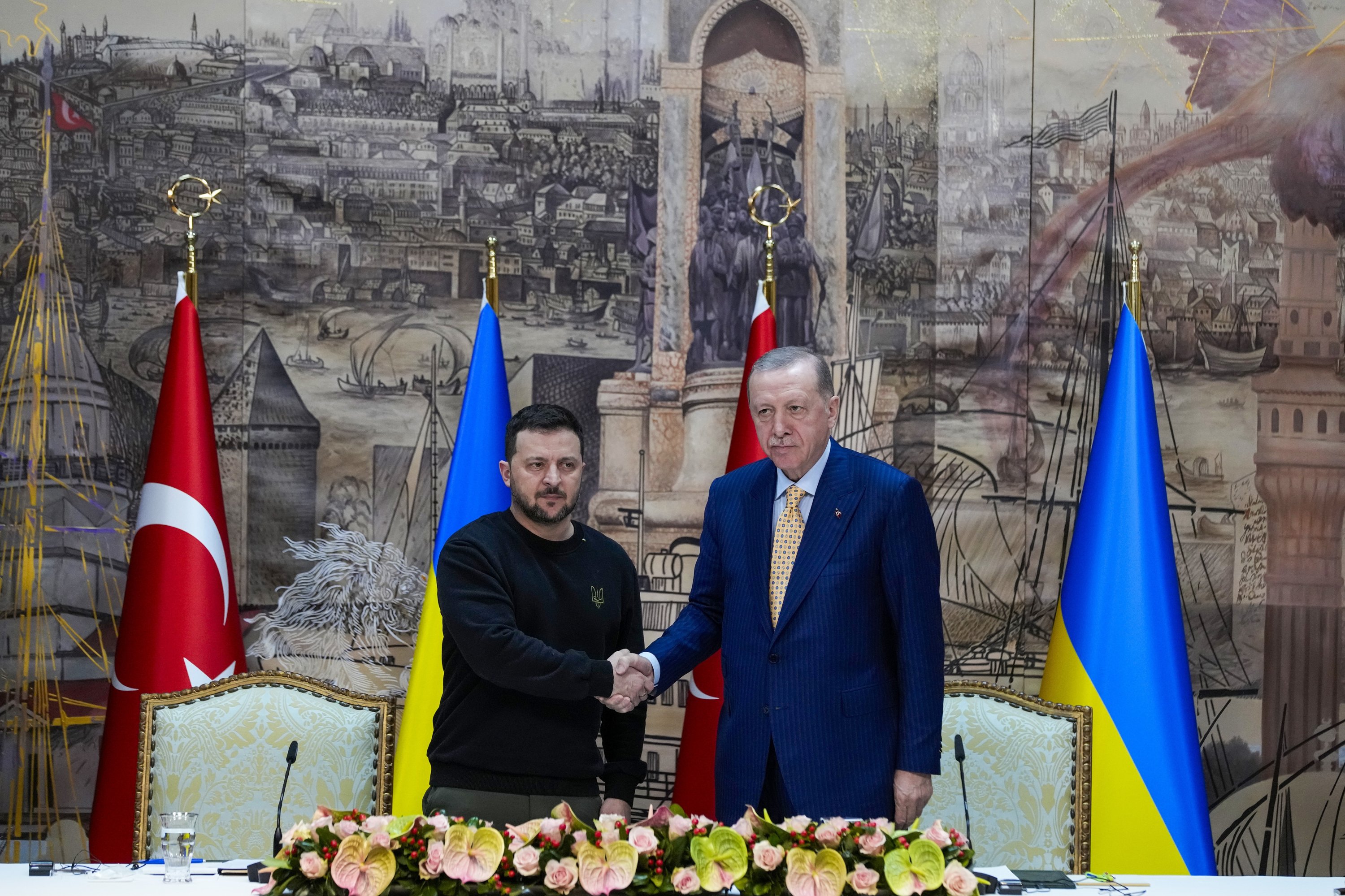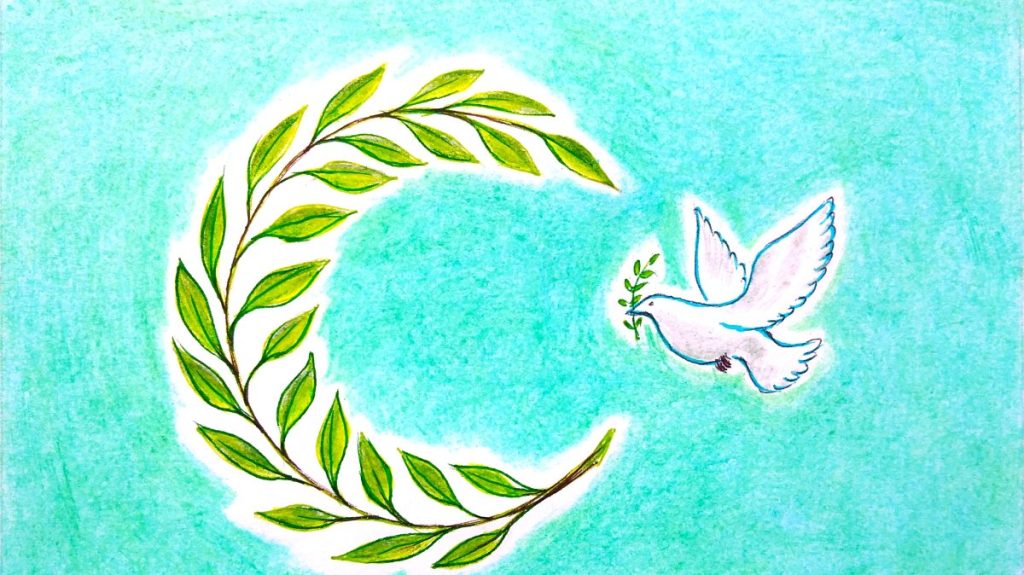The war between Russia and Ukraine is essentially a legitimacy crisis of a long-standing history. The relations between these two countries date back to their establishment and constitute an issue that draws the boundaries of historical legitimacy for both states. In this respect, the current conflict is too complex to be reduced to a single cause.
Today, the process offers the hope of a cease-fire or peace. Immediately after the Victory Day celebrations, with Russian President Vladimir Putin’s call in the night hours, Türkiye again became the mediating actor at the table to be set between the parties. Besides Türkiye’s credible position, the question “Who else could have set that table?” should also be addressed carefully. Analyzing this process attentively is crucial for international law, mediation capacity and conflict resolution.
While Article 2 of the United Nations Charter prohibits the use of force, Article 33 lists peaceful means of resolving potential conflicts. One of these methods is mediation between the parties. In this respect, Türkiye undertook this task in February 2022 and became the most important actor in bringing Russia and Ukraine together. It is extremely difficult to set up a diplomatic table and bring the parties to the negotiation table, but it is very easy to break that table. In 2022, significant efforts were made to ensure that the framework Türkiye had established on the basis of international law principles remained intact. The result, however, was more than three years of war, millions of displaced people, more than 1 million lives lost, cities razed to the ground and billions of dollars in damages.
Why did table collapse?
First of all, it is necessary to focus on this question. The table breakdown was caused by the strategies of the period’s great powers and global actors, which were built on otherness instead of consensus. This situation led to the emergence of systemic crises with Cold War-era approaches. In particular, the expansion of NATO, the increase in military expenditures and the global armament budget reaching $2.7 trillion have revealed that the issue is not only diplomatic but also based on geopolitical competition. That is why the cost of breaking the peace table and shelving reconciliation has been so high.
Today, a second chance is offered, providing a golden opportunity for the actors who must seize it. However, to do so, we have to first objectively analyze how we got to this process, what mistakes were made and why the table was broken. Achieving peace requires more than just a mediation statement; it demands a reconstruction of the process through realistic, determined, and principled diplomacy.
When U.S. President Donald Trump came to power, he promised to end the war between Russia and Ukraine within 24 hours. More than 100 days later, however, there is still no progress either on the front line or at the negotiating table. From time to time, Trump has raised his voice and increased his criticism, but he has still not achieved the desired result.
A partial cease-fire was planned, but Russia rejected it, fearing that Ukraine would use it to buy time. Subsequently, Russia declared an “Easter Cease-fire,” but there were serious violations during this cease-fire as well. On the one hand, Trump and his team tried to set a table, but on the other, the conditions of the actors who would come to the table did not match. The most important step taken was the normalization process between Russia and the U.S. The second important development was that Russia realized the change in the system with the Trump administration. Accordingly, transatlantic relations had entered a process of fracturing, especially in the military and economic dimensions. This situation started to manifest itself clearly on the ground.
While some misreadings of Trump’s statements about Russia were noteworthy, Europe was in search of a new security umbrella – or we can say that it was in search of a new actor to hold this umbrella. Because during the Cold War, the most important actor holding this security umbrella was the U.S., until Trump’s second term.
Breaking points for Russia
In fact, three important developments were effective in determining the main breaking point and Russia’s reorientation toward seeking a mediator in the field. First, at a time when Russia was relying on the Trump administration’s statements to increase its influence on the ground, suddenly, Ukrainian President Volodymyr Zelenskyy and Trump met at the Vatican during the Pope’s funeral. It was a short but effective meeting. Because after this meeting, Ukraine signed a mining agreement with the U.S., and the U.S. announced that it would provide arms aid to Ukraine. This development triggered a process that Russia did not want. There is a possibility that Russia will confront U.S. companies, especially in the areas it has seized in Ukrainian territory.
The second important development is U.S. Secretary of State Marco Rubio’s announcement that the U.S. will withdraw from negotiations on the Russia-Ukraine war. The question “what will happen now?” came to the fore when the U.S. changed its position, whereas before it had taken a pro-Russian course. This also exposed the uncertainties in the U.S. position.
The third development was Trump’s phone call with President Recep Tayyip Erdoğan. In this meeting, the power and influence of leader diplomacy were once again seen. Trump reiterated his confidence in Erdoğan and Türkiye while expressing a focus on common solutions in areas of conflict and war. This meeting was a remarkable turning point regarding the importance of Türkiye’s role as a mediator.

Why Türkiye?
As a result, Russia suddenly shifted its focus from partial cease-fire announcements to calls for mediation and the re-settlement of the peace table in Istanbul. Türkiye has become a mediator mainly because of its ability to analyze geography, history, and the cultures of states. Thus, it is seen as able to approach events from an in-depth perspective beyond conjunctural developments.
Another aspect is Türkiye’s ability to stand at an equal distance from all sides. On the one hand, Türkiye respects Ukraine’s territorial integrity and expresses this clearly on every international platform. On the other hand, it is a NATO member that does not impose Western sanctions on Russia while maintaining relations with Ukraine. In short, Türkiye maintains its policy of active neutrality. It is the fastest and most effective actor in setting the mediation table, being fair and equitable in international law to achieve reconciliation of the parties. Both Russia and Ukraine are aware of Türkiye’s reliability. Especially given the involvement of the U.S. and Europe, multilateral interests will shape a multilateral table.


